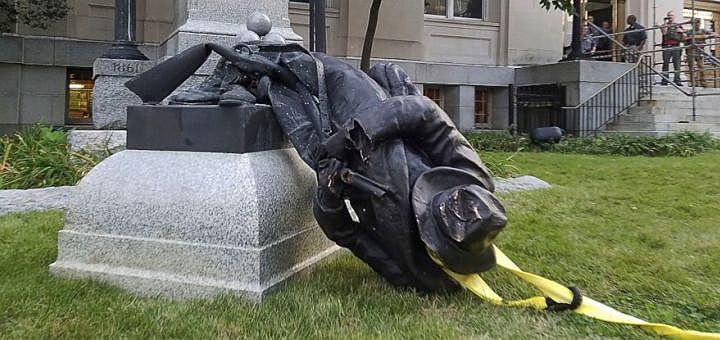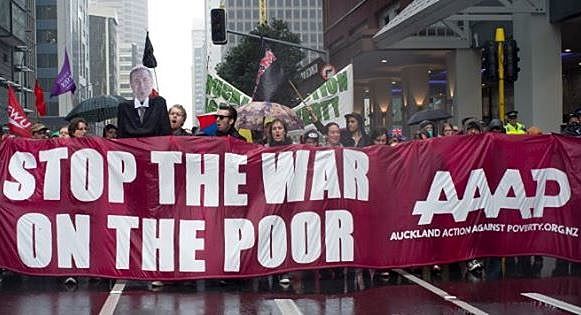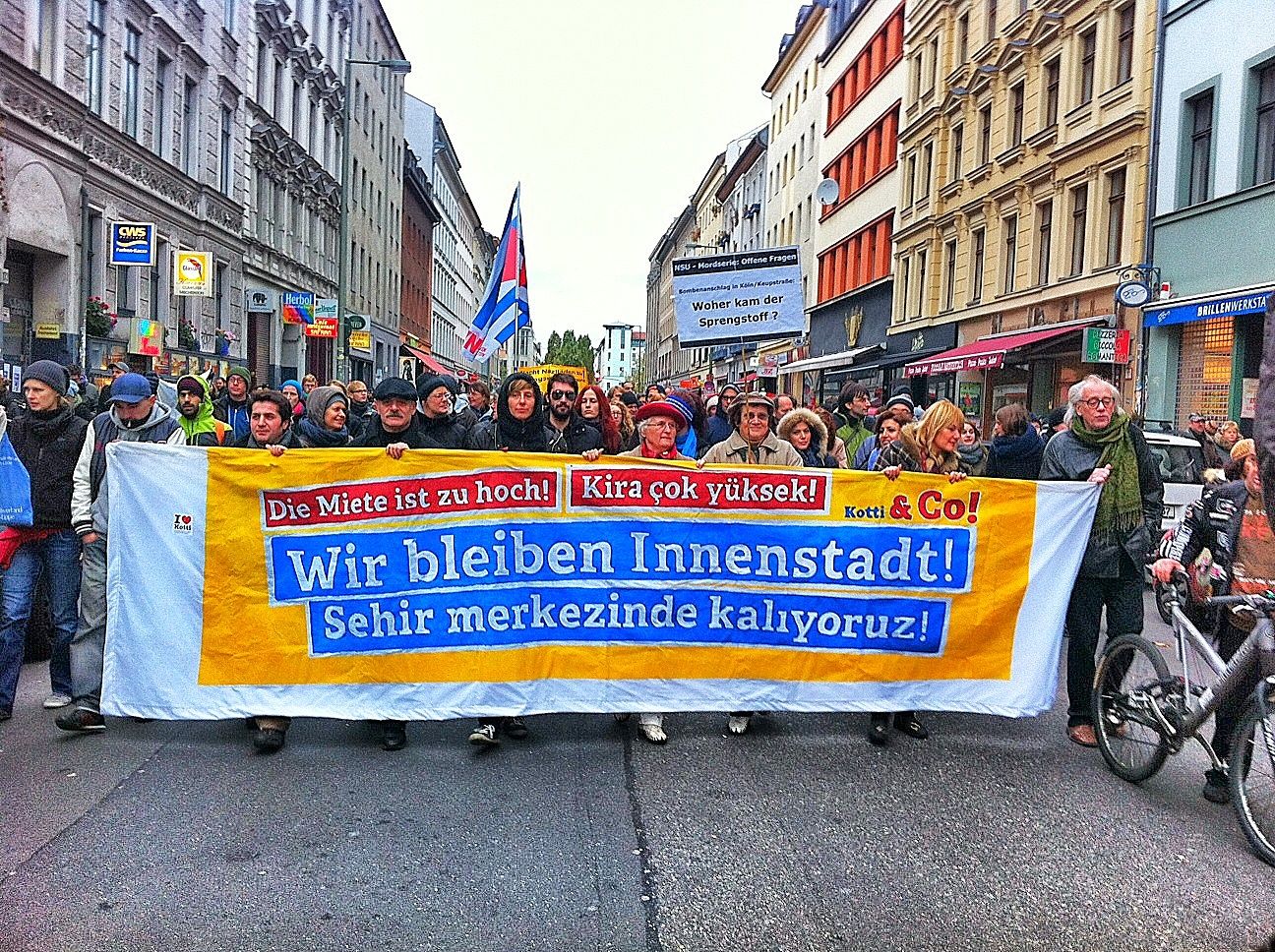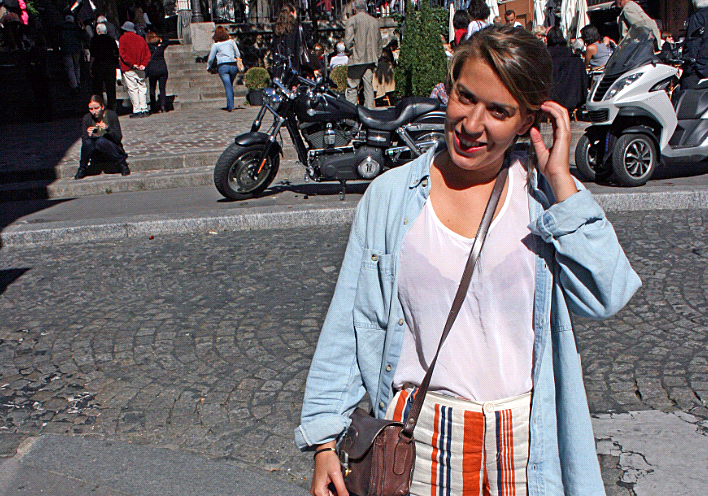The Right To The City: Against And Beyond
Melissa Harrison on the modern city as a contested space.
In a year when cities have become sites where patterns of socio-economic and historic violence are acted out, Melissa Harrison considers how they can be reclaimed, and makes the case for when it should happen against and beyond the law.
“The right to the city is far more than the individual liberty to access urban resources: it is a right to change ourselves by changing the city. It is, moreover, a common rather than an individual right since this transformation inevitably depends upon the exercise of a collective power to reshape the processes of urbanization. The freedom to make and remake our cities and ourselves is...one of the most precious yet most neglected of our human rights.”
- David Harvey
‘The right to the city'. A concept developed by philosopher Henri Lefebvre in 1968, and recently reignited as a popular and widespread slogan across various Occupy movements, it cuts through today's urban logic with as much relevance as it did 50-odd years ago. Le droit à la ville takes a Marxian notion of collective ownership and action, and moves it beyond the factory walls to lay claim to that which we collectively produce and sustain in our urban environments.
As Marxist sociologist David Harvey argues in his 2012 book Rebel Cities, the “quality of urban life has become a commodity for those with money".”[1] There is a quiet economic control that is increasingly carved into the spatial fabric of our cities. What's more, in our post-colonial societies (cities on stolen land, cities to which those from the former colonies have migrated), the politics of space and bodies cannot be untangled from the racial and gendered hierarchies, exclusions, and violence.
These are calcified by the policies and the laws that govern us, that set out neighbourhood zoning, where buses and trains would and wouldn’t go, how well the buildings were made and for who. Our societies are not simply marked by the residues of dark pasts - their structural core was built with rotting timber and reinforced with leaky cladding.
Theories aside, ‘the right to the city’ is not a claim to an abstract political future, or one at the whim of the market or constructed from the top-down. Instead, it is a claim to a democratic political project on the ground. It is a project that confronts and challenges the institutions that deepen inequality, prefiguring alternatives that demand and construct change rather than waiting for it to be drip-fed from on high, or, worse yet, wait for the life supply to be yanked away.
To this tune, the year in politics in Aotearoa New Zealand and afar has raised many questions about when and how ‘unlawful acts’ can be justified. From the arguments about benefit fraud prior to NZ’s general election, to the occupation at Ihumātao, to the destruction of Confederate monuments in the southern United States, to civil disobedience in Catalonia, many seem to pivot around a common concern: the sanctity of the law and an immovable belief that one should not break it. Yet, active subversion and transgression against structural inequality have historically been, tools to remake societies norms and codes - in very important ways. This is not to advocate for some sort of feckless lawlessness, but, rather, the rethinking of law’s fixity, its resoluteness. We should acknowledge that important resistances and changes have often come from below, against the law.
When throwing around a catchy phrase like ‘the right to the city’ - that runs the risk of being both trivialised and co-opted - we can’t be glib or nebulous. It requires clear caveats and even clearer strategy. This is increasingly important as we witness a rise in organised campaigns espousing racist ideas, and often violent acts, in our streets and squares.
‘The right to the city’, in some instances, is a right to a truthful narrative; one that is inscribed in our cities not by a few but by the many voices that are continually silenced while symbols of racist violence stand proudly erected. It is a claim to inclusion against a history of exclusion.
The ‘right to the city’, as I discuss it here, makes a claim to equality; a claim to be seen, to be heard, to exist, and to take a part in making our cities when otherwise robbed of visibility, voice, place, and agency. It does not make a claim to action and violence that seeks to rob others - based on ethnicity, gender, economic-standing, or belonging - of their stake in the city.
Perhaps some clarifying terminology would take a first step towards grounding this distinction. At the risk of simplifying or reducing the complexities embedded in the notion of ‘the right to the city’, we could draw a line of difference between acts of inclusive reappropriation and acts of exclusive expropriation.
To reappropriate the city, as I see it, is to take it back by the threads that - sometimes silently, other times brutally - weave a fabric of surveillance, control, oppression, and violence. It is to subvert the apparatuses of segmentation and exclusion, spatial and economic, that wield various decibels of power over bodies and lives. And, as we have seen in the ‘unlawful’ acts of vandalism towards Confederate statues and iconography, ‘the right to the city’, in some instances, is a right to a truthful narrative; one that is inscribed in our cities not by a few but by the many voices that are continually silenced while symbols of racist violence stand proudly erected. It is a claim to inclusion against a history of exclusion. ‘The right to the city’ cannot co-exist with a celebration of its expropriation for the sole benefit of hegemonic groups.
We are told that we are all free and equal. But, freedom and equality cannot be simply uttered, they must be fought for, against systemic inequality and unfreedom - otherwise they become branding, the kind of wallpaper used to market an urban space’s vibrancy`. In Philosophy and Resistance in The Crisis, London-based law professor Costas Douzinas dispels this notion that “we are all legally free and nominally equal” with a crucial caveat: a list of those excluded from this decree, whether the propertyless, the ‘wrong’ races or ethnicities, genders, religions or belongings[2]. For many of these excluded persons, he argues, “right is not about law and judges, a game they cannot play”, no: “It is a battle-cry.”[3]
The right to insubordination is the right to fight for another, more just world. To quote Douzinas again, I would argue that this is a right that keeps “social systems and legal orders alive by preventing their sclerosis and reversing their ossification.”[4] The inevitable counter-strike will always hit hard on those resisting their exclusion and impoverishment; but, here, closest to the marginalised and disenfranchised, those our system attempts to render invisible, we find the struggles of some of the most critical change.
From the civil rights movement to anti-colonial struggles by which colonial subjects organised and posed enough resistance to overthrow their governments, many of the world’s most vulnerable persons have put their lives on the line, diagonally traversing the law to carve out an alternative existence, an alternative world. While these historical examples are pretty unanimously accepted as unquestionably justified, at the time their proponents embarked on great risks to act against the grains of deeply rooted beliefs and institutions; to perturb the status quo and unravel the laws governing their bodies and their lives.
It’s perhaps not surprising that more recent instances of resistance, subversion, and transgression against the law that haven't yet been bedded in normative systems of legal or political change are sometimes less accepted, treated as simple lawlessness that warrants official sanction. By exploring these, I am not comparing them to the extent of injustice that bred the biggest fights of the 1950s and 1960s. But, It does beg the question: will many of the codes and norms that govern us today one day be obsolete, shrouded in the shame of their injustices? Without the actions of those who resist them - simultaneously scandalising inequalities while actively asserting the right to a safe, secure, and meaningful existence - perhaps not. Where does this leave the city, the place where most of the instruments of power tend to congregate to maximum effect, and the place where most of us live?
Over the past decade, we have witnessed the aggressive criminalisation of squatting and the continued mythologisation of the squatter as an unruly leech, or a nihilistic anarchist. Such images place a very intentional gauze over our eyes to obscure both a violent state of housing as well as, what many squatters learnt, could be openings to an alternative imagination of the city. In Alexander Vasudevan’s meticulously researched book, The Autonomous City, he explores the tenacity and inventiveness demonstrated in reimagining and reclaiming Lefebvre's ‘right to the city’. It is in no way an attempt to romanticise the (often) precarious nature of squatting, but, instead, emphasises the dynamic nature of various squatters motivations; both against and for, out of necessity and want, resistive and creative.
Squatting turns the notion of private property on its head. It scandalises the disconcerting fact that buildings stand empty, subject to property speculation and earmarked for development while people live on the streets, in overcrowded apartments, or are being violently evicted from foreclosed homes.
An exploration of why people are either forced or compelled to explore these alternative forms of living together reveals the erosion of housing as a basic social need. As Vasudevan asserts, “[housing] has become an instrument of profit-making transforming today’s cities into sites of intense displacement and inequality, exploitation and poverty.[5]” A vast amount of anti-squatting legislation coincided with a global financial and housing crisis, and he critiques this as an ideological attempt to ‘uphold the sanctity of private property’.[6]
Squatting turns the notion of private property on its head. It scandalises the disconcerting fact, particularly post-GFC, that buildings stand empty, subject to property speculation and earmarked for development while people live on the streets, in overcrowded apartments, or are being violently evicted from foreclosed homes. But, more than simply scandalising, these inventive practices that fight against the lack of the most basic necessities suggest alternative ways of cooperatively living together, of self-organising, and of claiming not only the right to the city but the right to live in the city, safely and securely.
While sometimes, for some people and in some contexts, a legal foothold is unavailable, I do not wish to paint a narrow picture that equates resistance with illegality. There are ubiquitous examples of people fighting for change by occupying many zones, sometimes entirely legal, sometimes illegal, and sometimes grey.
One such anomalous situation is evident in the work of PAH (Platform for People Affected by Mortgages, or in Spanish, Plataforma de Afectados por la Hipoteca), co-founded by Ada Colau who is now the first female mayor of Barcelona. The first incongruity was of the state's making: in an article for ROAR magazine, Timothy Ginty points out that Article 47 of the Spanish Constitution declares “all Spaniards have the right to enjoy decent and adequate housing.” When neither the government nor the market would or could uphold this constitutional right, the activist movement took to fighting alongside the tens of thousands of people across Spain who faced mortgage evictions or utility cut-offs.
Instead of the usual demonstrations, PAH employs direct action tactics: firstly legal, and if those fail, sometimes ‘alegal’ or ‘illegal’ tactics. When negotiations with the banks are unsuccessful, the ‘social work’ branch of the movement steps in to ensure people and families do not end up on the streets. Sometimes they are successful in blocking evictions, other times they help families occupy one of the tens of thousands of empty bank-owned buildings. But, as Ginty highlights the irony:
“To say that the banks actually ‘own’ these empty flats is, as one PAH organizer put it, entirely misleading, for it was the Spanish people who bailed out these banks during the crisis, and it is therefore the Spanish people who own these properties.”
Beyond the home, institutions govern the public spaces we share to co-create our common world and daily lives. The increasing privatisation of public spaces, or formation of POPS (privately owned public spaces), means that bodies in these spaces are no longer governed by common laws.
A recent article in the Guardian by Jack Schenker, on the insidious creep of pseudo-public spaces, highlights that each space is subject to its own set of - largely undisclosed and nebulous - rules of conduct. The right to gather in public spaces and demonstrate is largely prohibited in POPS, as is rough sleeping. In some instances, Schenker reports, so is taking photos or looking ‘scruffy’. Must we hold these rules up above all else, ensuring that we do not transgress their sanctity; or is there a place to resist, to scandalise, and to assert that we want another city, one where all people are welcome in our public spaces, free from the dictates of market interests, gendered or racial discrimination? I’d hope so.
Institutions that create norms and codes of conduct are undoubtedly important to the functioning of healthy societies. But, when these fail us, a blind and uncritical acceptance of governance for governance’s sake can enter dubious territory.
As ‘post-political’ as these strategies and measures appear, there is no doubt that they bear extreme political and social consequences that intensify the marginalisation of certain groups. As Vasudevan writes of squatting: “They are excluded so they take. But they are not seizing an abstract right, they are taking an actual place: a place to lay their heads. This act - to challenge society’s denial of place by taking one of your own - is an assertion of being in a world that routinely denies people the dignity and the validity inherent in a home.”[7] The same can be said for bodies that take a concrete place in our public spaces. When they assert their presence and belonging in a world that they are excluded from on a daily basis, they make a claim to provisions that ensure a degree, however small, of basic equalities and dignities; remaking the city and themselves.
As I consider this, I can’t help but turn to the city that I currently call home, Berlin. Despite relatively robust German rental policies, the city is facing unprecedented rent hikes and urban displacement that is disproportionately affecting neighbourhoods - such as Neukölln, Kreuzberg, and Wedding - that are comprised of large numbers of second and third generation ethnically-Turkish immigrants. When an apartment changes hands, it is disconcertingly common for the new owner to hike the rent by double, sometimes more, after completing ‘luxury modernisations’. These usually amount to little more than unwanted cosmetic repairs, while fundamental changes that would improve the tenants’ quality of living (modifications for disability, or amenity, for example) are ignored.
The cruel irony is that when the tenants are successfully pushed out the door, the apartments are often left vacant while the property speculators await the perfectly ripe moment to turn the property over or to enter into new rental-contracts. This was the case for Nuriye Cengiz - an elderly woman with a physical disability who moved to Berlin from Turkey with her husband in the late 60s - whose ground floor apartment, today, stands empty five years after her eviction.
As the onslaught of threats to the private realm of dwelling increased, a group of diverse Kreuzberg residents - young and old, professionals, students and unemployed, of various ethnic groups - came together and stepped into the public realm of neighbourhood organisation. They collectively resisted the selling-off of public housing to private investors and the displacement of long term residents who made Kreuzberg the lively neighbourhood that is so coveted today.
A moving independent documentary, translated as “Rent Eats the Soul,” portrays the struggles and protests of the tenants’ collective Kotti & Co. The group took the struggle for decent and affordable housing outside of the individual housing-unit and into the streets. On the night of May 26, 2012, a group of residents occupied a public square at Kotbusser Tor and built a protest house called “Gecekondu”, Turkish for “built overnight”. This became a space not only of daily resistance and community organisation but a space of radical care and solidarity, fighting against the grains of neoliberal atomisation and racial segregation. It was a space for people of varying political views, ethnic identifications, religions or belongings to come together not despite their differences but because of their differences.
During one meeting, a woman states, “but they never believed that a ‘headscarf-woman would sit down next to an atheist woman,” to which said-woman fires back a tongue-in-cheek response, “how do you know that (I’m an atheist)?”. Everyone breaks into laughter. There is a gentleness to the way they dismantle barriers by simply being in the presence of one another, sharing experiences, and working towards a common future.
In various contexts and different guises, rules and laws can be used to control and suppress; to marginalise and exclude; to perpetuate inequality and injustice. Institutions that create norms and codes of conduct are undoubtedly important to the functioning of healthy societies. But, when these fail us, a blind and uncritical acceptance of governance for governance’s sake can enter dubious territory.
We must constantly question, challenge, and resist laws and conventions that do not construct equality and justice for all. It is not only our democratic right but, perhaps, for some of us, it is our duty. Beyond resistance, this is a hopeful cry. Collectively reclaiming the right to the city can be a powerful prefigurative act that paves the way not to a distant utopia but moments of lived utopia in the everyday. Sometimes playfully and creatively out of desire, other times at great risk out of need. It will always be contentious; marked by conflict and negotiations; without end; perpetually in movement and open to new becomings.
To come back to Lefebvre in a time where every city has its boosters, its utopian advertising, its public-private partnerships: "‘Transform the world’ - all well and good. It is being transformed. But into what? Here, at your feet, is one small but crucial element in that mutation.”[8] Against the injustices of the metropolis. Beyond. Here, at our feet, people are bravely carving out an alternative, many alternatives.
[1]David Harvey, Rebel Cities: From the Right to the City to the Urban Revolution (London: Verso, 2012), 14.
[2]Costas Douzinas, Philosophy and Resistance in the Crisis: Greece and the Future of Europe (Cambridge: Polity Press, 2013), 85.
[3]Ibid
[4]Ibid, 84.
[5]Alexander Vasudevan, The Autonomous City: A History of Urban Squatting (London: Verso, 2017), 6.
[6]Ibid, 7
[7] Robert Neuwirth, Shadow Cities: A Billion Squatters, A New Urban World (New York: Routledge, 2005), 311.
[8]Henri Lefebvre, Introduction to Modernity: Twelve Preludes, September 1959 - May 1961 (London: Verso, 1995), 126.




